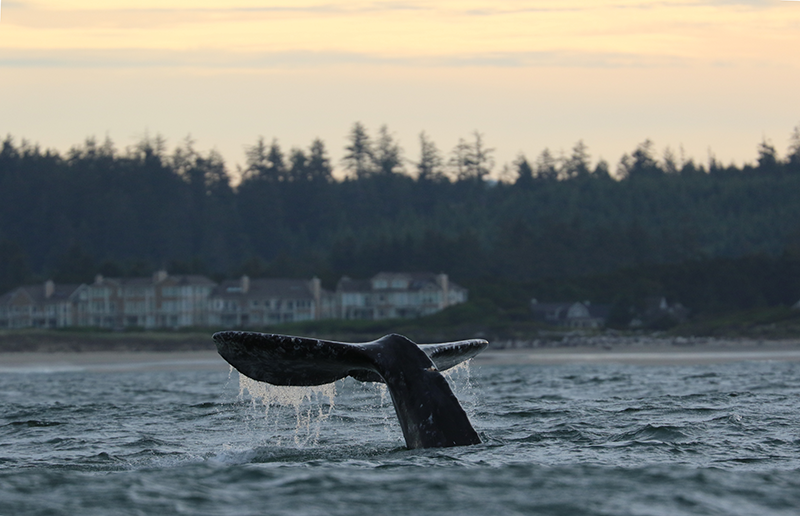It was a good live crowd — over a hundred folk, November 30, at Hatfield’s new classroom building, Gladys Valley Marine Studies Building Auditorium. And another 100 in “attendance” on the Zoom Doom.

I’m a member of the Cetacean Society International, and the American Cetacean Society, and unfortunately for the Oregon group, their meetings and live speakers have retreated to the digital dungeons, never having face-to-face meetings anymore in Newport. That is the sham and the shame of this new abnormal. Even this OSU event had the live component, with a bistro in this overpriced new building, and beer and wine, also available. Fancy auditorium, no?

I did a story on this building in its construction stage, here:

I covered a conference, too, again, three years ago, when the local rag let me write a long form column on a regular, paid basis: “Should We Trust Science? (Conference celebrates how the ocean connects to all of us — coastlines, people, cultures”)
I have written about my love of ecosystems, marine systems, and my dive bum days, and, of course, I have also written stories on ecosystems and marine biology, etc. There are many stories still to be told, but last night’s talk by Leigh Torres, Associate Professor, Department of Fisheries and Wildlife and Oregon Sea Grant, was a recap of all the work she and her graduate (PhD and MS) students have been doing on gray whales, including the distinct Pacific Coast Feeding Group, numbering around 250.
There were other scientists there, and there were many young students from the OSU Hatfield Marine Science Center. Older retired folk were there, and I had a sense that most people there were somehow associated with the university, with marine sciences, directly or through a relative engaged in that avocation.
As I’ve said before, there are many women going into the sciences, and you can see Leigh below with her skiff and her female graduate students working on drone surveillance and other forms of research to get more data on the gray whales on our coast.
A talk like this is all about loving those cetaceans, and our PCFG draws people from around the country to our coast for whale watching. May through October, they are here feeding. Depoe Bay is a great spot to watch.

Below images and videos, and at the end, is the actual Power Point Presentation from the November 30 presentation.
These scientists want to know why the Pacific Group is sticking around our coast and not heading to the Arctic with the majority of gray whales. The whales all calf in the waters of Baja. Then, the trip north. They number for all groups around 20,000.
Basic ecology and animal-mammal biology mean looking at how they “are” in their environment, what their hormones show, and what is happening to their prey. The fact this Pacific Feeding Group is in highly human-influenced/disturbed waters is also a point of research. Then, of course, we have their prey as well as in noise and as in boats coming up to them, and as in the crab pots that cause entanglements.
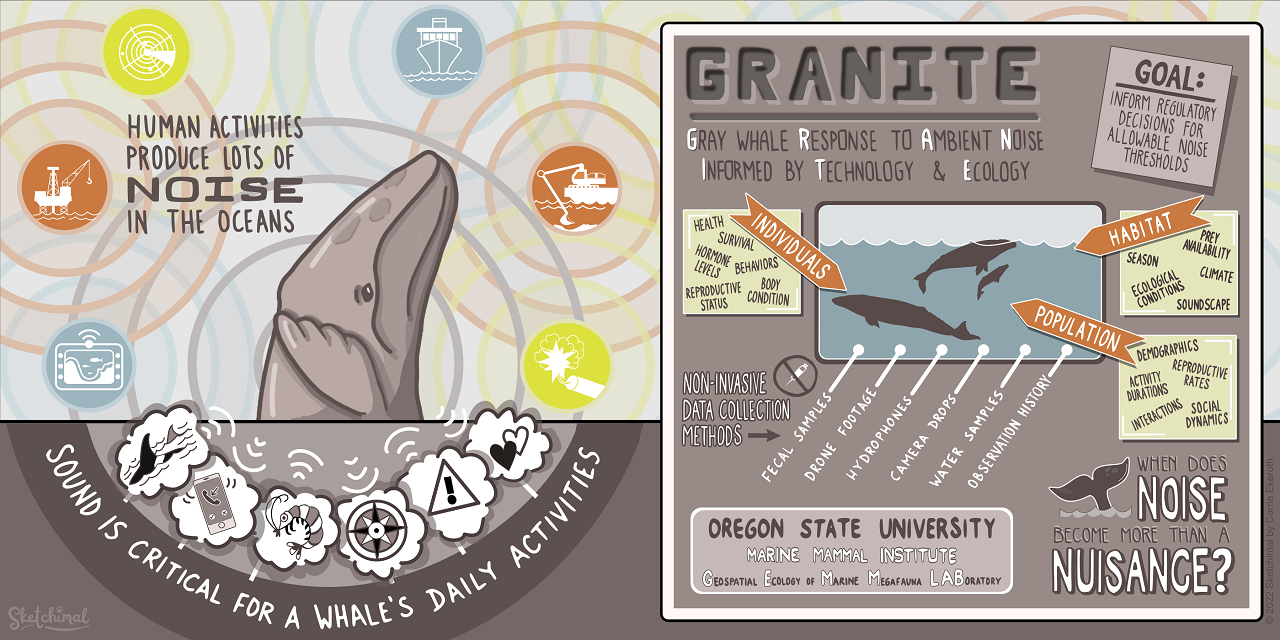
And, those strikes, those hulls and propellers hitting whales:
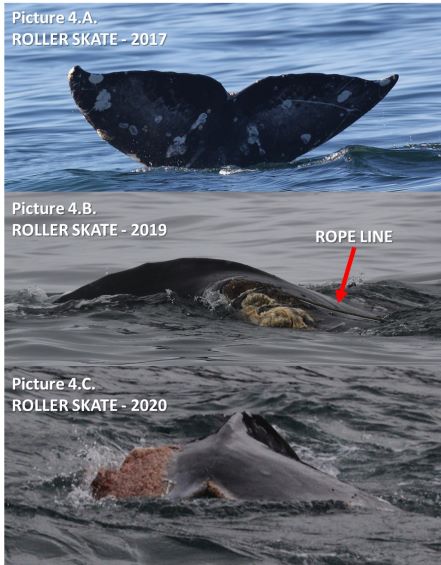 Diet for these whales?
Diet for these whales?
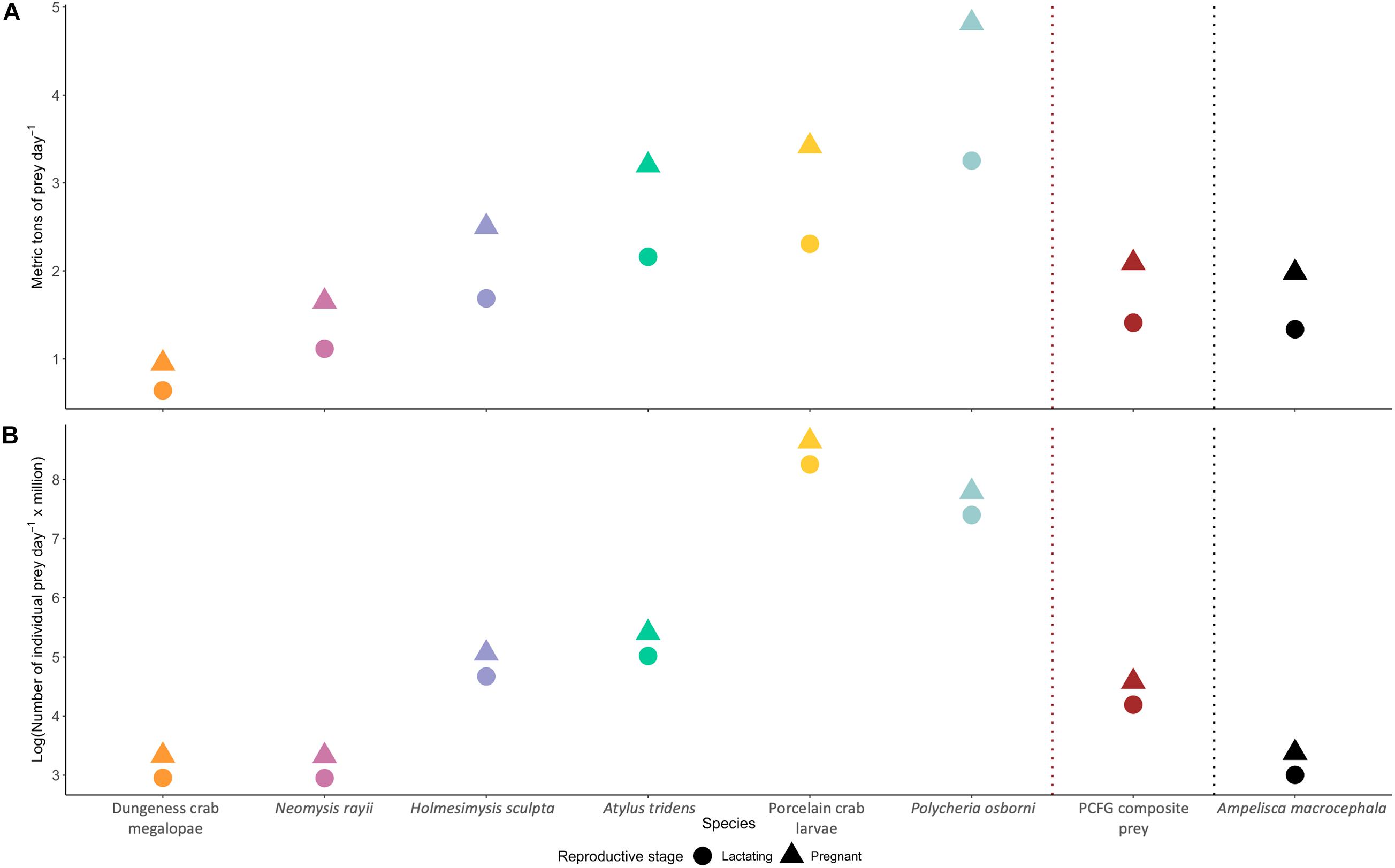
As part of the research they look at the energy of whichever species the gray whale eats, as seen above. And, since 70 percent of the prey is mysid shrimp, the scientists want to know what those animals have in their bodies.
We are THE plastic species, as is the entire ocean. The gray whales have small fiber plastic — microplastics — and then beads in their feces. They are eating prey that has plastic in their bodies, and they also scoop up water and dirt that also have plastic in it.
In pregnant and lactating females, the amount of this zooplankton they have to consume is 1.5 to 2 tons of prey a day. The bio-accumulative effect of the plastics is huge under those tonnage numbers.
The underwater Go Pro Cameras give some cool images of gray whales in action. The poop or fecal samples give the scientists the cortisol levels — stress hormone — in the animals. There are unusual mortality events, one big one happening in 2014 in Mexico. Many of those animals were emaciated. Many animals die, and sink to the bottom of the ocean.
The estimated 14.3 million to 23 million microparticles of plastic per ton of shrimp they eat HAS to have an effect on total physiology of the animals.
Then we have the entire web of life — sea stars, kelp, urchins, the zooplankton, all of that.

We have urchins going up in population, as the health of kelp, zooplankton, and gray whales feeding zones is declining. Sea stars eat urchins, as do sea otters. We have no marine otters here on the coast of Oregon, and the sea star wasting disease has decimated that species, allowing for more urchins, which eat young kelp. Kelp beds are rookeries, and the zooplankton/meroplankton need that web of life.
The grays need that zooplankton to survive.
The end goal is to get this PCFG categorized as a distinct subspecies, to have them protected.
Again, science in a time of climate disruption, pollution, over-harvesting, and disturbances in food webs is both interesting and reliant upon year after year of more and more data, more and more bearing witness to declines in species. As the scientists get smarter with smarter tools, the general population and politicians at large get dumb and dumber.
Here’s a fact: One of the most dynamic and depressing jobs in the world is being a sea turtle expert. I remember him at the Bioneers events I was a part of, Wallace J. Nichols. Here, quotes:
Ocean plankton provides more than half of our planet’s oxygen.
Education should be based on simple awareness: Awareness of what is so real and essential, so hidden in plain sight all around us, all the time, that we have to keep reminding ourselves over and over: This is water.


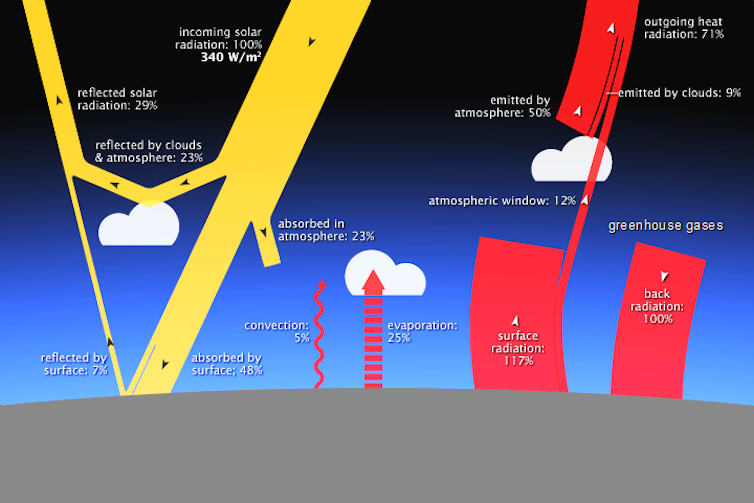
Since the sun is hot, it gives off energy in the form of shortwave radiation at mainly ultraviolet and visible wavelengths. Earth is much cooler, so it emits heat as infrared radiation, which has longer wavelengths.
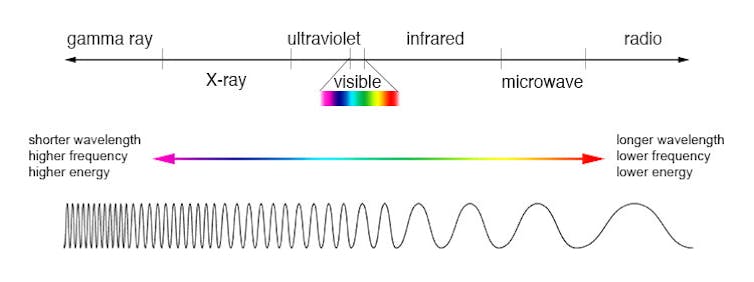
Carbon dioxide and other heat-trapping gases have molecular structures that enable them to absorb infrared radiation. The bonds between atoms in a molecule can vibrate in particular ways, like the pitch of a piano string. When the energy of a photon corresponds to the frequency of the molecule, it is absorbed and its energy transfers to the molecule.
But back to whales! We have a planet that is under huge stress. The lifestyles of the rich and famous and disgustingly insane billionaires and millionaires, and, of course, the upper part of the collective west, they are the killers. WE throw away giga tons of food, products, things each year. WE do not build for durable and long-lasting effect anymore. Throw it all away, and out with the semi-used, in with the new style. Planned and perceived obsolescence. What is the embedded and life cycle of everything? We are wasteful and dirty.
It’s cheaper to toss the helicopter overboard than to bring it home. Agriculture is at war with nature, with ecosystems, with all the real natural services mother earth gives.
But the yammering and yammering about how greenhouse gasses do nothing to warm the planet, to acidify the oceans, or that pollution doesn’t cause acid rain, all of that, plus how many species of meat for humans are destroyed because of Avian flu or salmonella or lysteria or, well, you get the picture, none of it is put together to look at what capitalism is, really. Barbarism, savagery.
Oh, the isle of rabid men: The Whole Foods decision comes after the Marine Stewardship Council and Seafood Watch recently pulled their lobster endorsements over concerns about risks to rare North Atlantic right whales from fishing gear. Entanglement in gear is one of the biggest threats to the whales, they said.
Yep, those democratic governors, and jobs, and, a way of life:
“Maine Senators Susan Collins and Angus King, Representatives Chellie Pingree and Jared Golden, and Governor Janet Mills today released the following statement after the Marine Stewardship Council (MSC) announced plans to temporarily suspend their certification of Maine’s lobster fishery. In their decision, MSC acknowledges that while the Maine fishery meets standards for sustainability and environmental impact and is unlikely to cause harm to right whales, it is unable to certify any fishery that is not in compliance with federal regulations – a standard MSC believes the fishery does not meet due to the ongoing litigation in CBD v. Ross.”
Today’s decision by the Marine Stewardship Council to temporarily suspend certification of Maine’s lobster fishery is the result of a years-long campaign from misguided environmentalist groups who seem to be hellbent on putting a proud, sustainable industry out of business without regard to the consequences of their actions. While the Maine industry met the highest standards for environmental sustainability and impact, the current pending CBD v. Ross court case led by the Center for Biological Diversity, Conservation Law Foundation, Defenders of Wildlife, and the Humane Society of the United States made certification impossible. This litigation is based more on activism than evidence and is putting livelihoods in jeopardy.
So, designating the PCFG as a distinct and need-to-be-watched/protected species will then, hit not just the crabbers, but our Makah:
Makah Whaling – A Gift from the Sea
Whaling and whales are central to Makah culture. The event of a whale hunt requires rituals and ceremonies which are deeply spiritual. Makah whaling the subject and inspiration of Tribal songs, dances, designs, and basketry. For the Makah Tribe, whale hunting provides a purpose and a discipline which benefits their entire community. It is so important to the Makah, that in 1855 when the Makah ceded thousands of acres of land to the government of the United States, they explicitly reserved their right to whale within the Treaty of Neah Bay.
Makah whaling tradition provides oil, meat, bone, sinew and gut for storage containers: useful products, though gained at a high cost in time and goods.
The Makah Whale Hunt
To get ready for the hunt, whalers went off by themselves to pray, fast and bathe ceremonially. Each man had his own place, followed his own ritual, and sought his own power. Weeks or months went into this special preparation beginning in winter and whalers devoted their whole lives to spiritual readiness.
Men waited for favorable weather and ocean conditions and then paddled out, eight in a canoe. They timed their departure so that they would arrive on the whaling grounds at daybreak.
Paddling silently, whalers studied the breathing pattern of their quarry. They knew from experience what to expect. As the whale finished spouting and returned underwater, the leader of the hunt directed the crew to where it would next surface. There the men waited.
We are in weird and broken times. War, war makers, war manufacturers, billionaires in Monaco with Lamborghini’s with Ukraine licensce plates. Sunny place the size of Central Park but with shady deals. Billions disappeared for ZioAzovNaziLensky. Billions, man, and the money is being made vis-a-vis crypto currency; the scams, all of the money laundering, and we sit and watch the world burn.
Jobs of whalers, jobs of tobacco farmers, jobs of gun-bullet-missile makers, jobs of all those alphabet agencies, jobs of the hedge funders, jobs jobs jobs on the chopping block . . . and what about that way of life jeopardized — the survival of the dirties, meanest, most monster-like species. One giant Faustian Bargain on a planet that, well, you climate change deniers, you techno fascists, you gurus of WEF and great reset, disbelieve then that the planet is in bad shape.
And, the auditorium was filled with middle and upper middle class folk, probably more PhD’s in one room ever along the Oregon coast, and they had the fancy salads, triple Americanos, hoppy drafts and local wines.
For a talk, man, and Leigh is good, but to be truthful, the talk was high school level, really. And, she’s given the same talk three years ago, live, in the Newport library, for the local American Cetacean Society, before those people went underground, in the Zoom Doom Rooms, never to be seen again at a live event.
These are strange times. Whale watching for a feel-good touristy cause, but whale watching boats are part of the problem. There are calls to curb the watcher boats in Puget Sound. Here, a great interactive series:
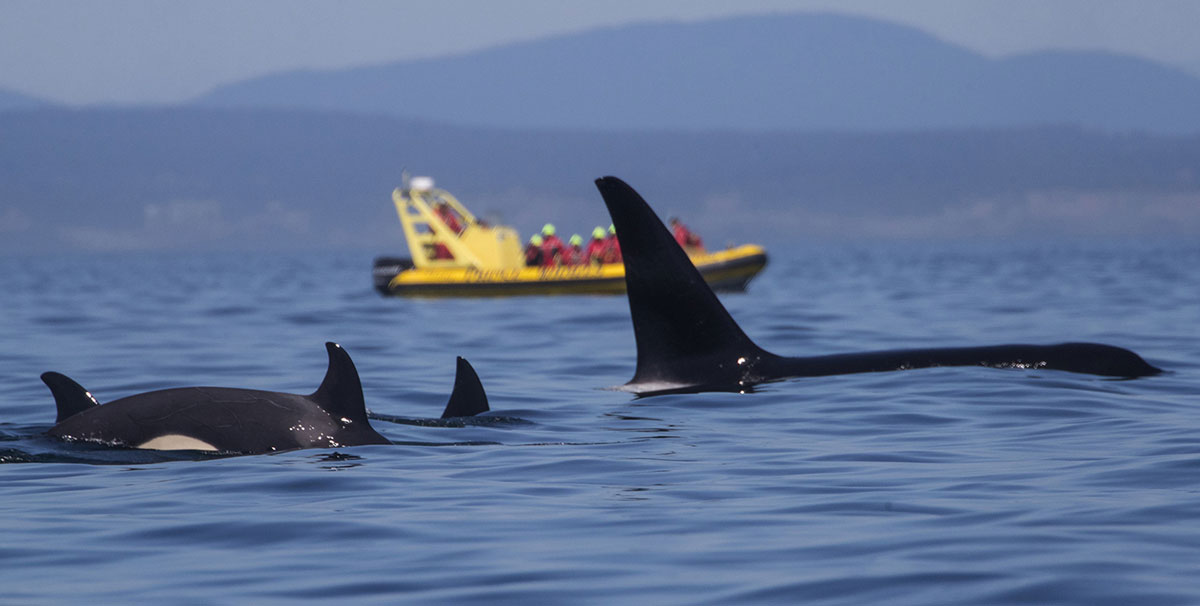
Man-Woman, versus beasts. All that hi-tech equipment, all the plastics in the scientists’ tool kit, all the gasoline and diesel and electricity expended to research. Yes, these people have their hearts in the right place, but scientists are still data freaks, and they do not have hard spines when the world needs steeled spines in the mix. All that state-funded, taxpayer-paid-for bricks and mortar and all the money spent to create these institutions of higher learning, yet, these smart people are not on the front lines, and god forbid we talk about CAPITALISM, because, colleges, all the grants, all the bells and whistles, it’s still about CAPITALISM.
But the Makah?
The 1855 Treaty of Neah Bay could not be clearer: The U.S. government agreed the Makah Tribe, natives of the northwest tip of the Olympic Peninsula, had “the right of taking fish and of whaling.”
Yet across nearly a century, the tribe has organized just one whale hunt, a much-protested outing in May 1999. Starting in the 1920s, the Makah stood down from whaling because of global over-harvest of whale populations. With the once-endangered Eastern North Pacific gray whale population now flourishing, the tribe should be allowed to resume the traditional, treaty-guaranteed hunts around which generations of Makah built a culture.
The traditions of the tribe’s canoe-based whale hunts are held sacred and passed down within families. Yet regular hunts have been stymied for 20 years by protests, bureaucracy and legal objections.
Species survival is no longer a reason to stop the Makah from hunting whales. Researchers estimate there are almost 27,000 Eastern North Pacific gray whales today, though the Western North Pacific population remains endangered. The National Oceanic and Atmospheric Administration (NOAA) has tracked the status of these pods of whales for years and considers the current Eastern numbers approximately the maximum the habitat can sustain. (source)

